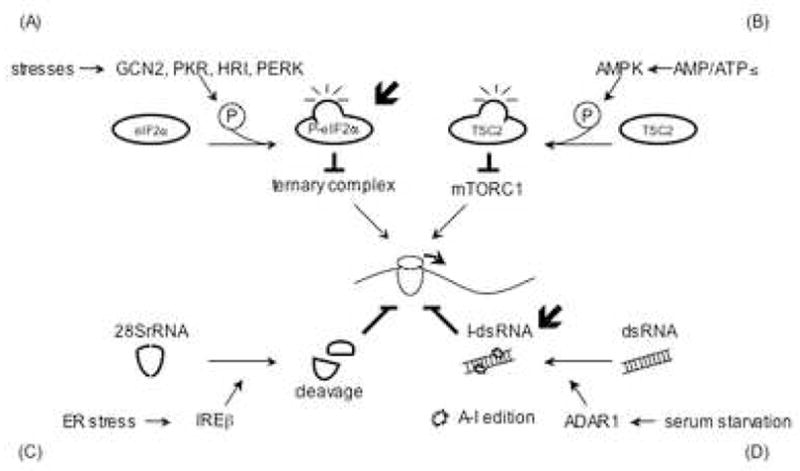Figure 1.

General translation inhibition by stress. (A) Phosphorylation of eIF2α (P-eIF2α) is induced by GCN2 (amino acid starvation, UV), PKR (dsRNA), HRI (low heme, arsenite, osmotic stress, heat stress) or PERK (ER stress). P-eIF2α blocks translation initiation by inhibiting the eIF2/GTP/tRNAMet ternary complex. (B) Energy starvation elevates the AMP/ATP ratio activating the AMPK-TSC pathway. This in turn attenuates mTORC1 activity to inhibit phosphorylation of 4E-BP and S6K. (C) 28S rRNA cleaved by IREβ. The resulting structural alteration inhibits translation by an unknown mechanism. (D) Hyper-edited inosine containing dsRNA (I-dsRNA) is produced by ADAR1 whose protein expression is up-regulated by serum starvation. I-dsRNA inhibits translation at initiation probably by nucleating the assembly of stress granules (SGs). The localization of ADAR1 in SGs has not been confirmed, however, APOBEC3G, a C to U RNA editing enzyme, is found in SGs.  indicates the possible SG-related mechanism.
indicates the possible SG-related mechanism.
